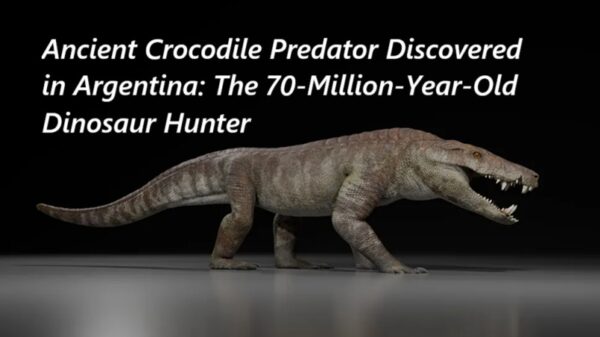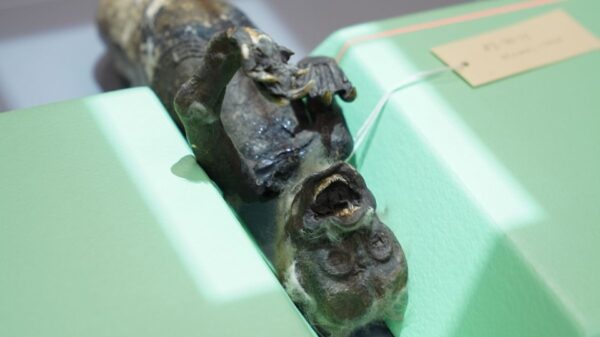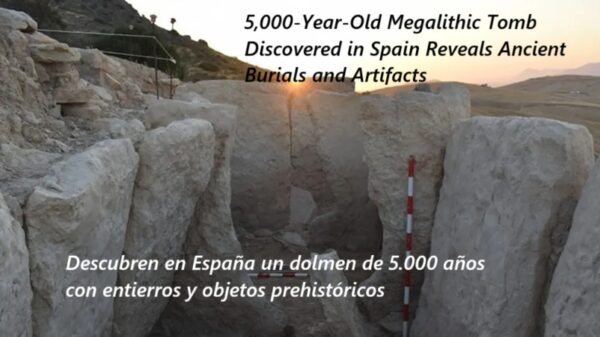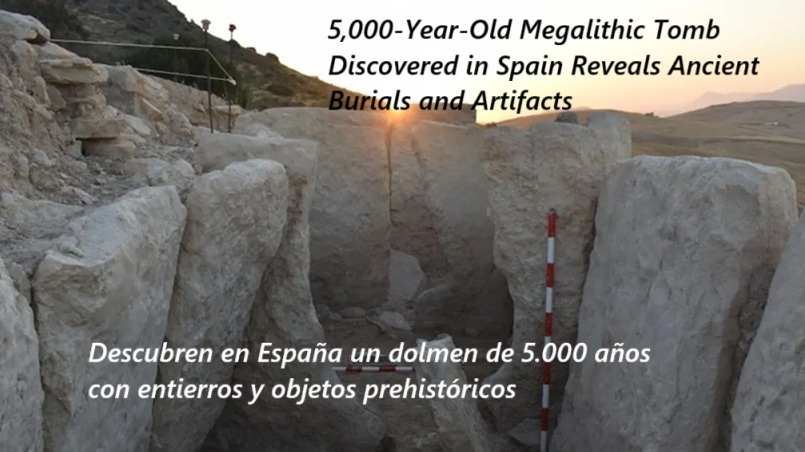Archaeologists in southern Spain have made a remarkable discovery: a giant stone tomb, or dolmen, that is about 5,000 years old and nearly 43 feet (13 meters) long.
Dolmens are prehistoric stone monuments built with tall vertical slabs and heavy stone roofs. They often served as collective burial places, but could also have ritual or symbolic purposes. The newly uncovered tomb, located near the town of Teba in Andalusia, is considered one of the largest and best-preserved ancient funerary monuments in the region.
The tomb’s stone walls stand over 6 feet high and were once covered with a mound of sand and smaller stones. Inside, archaeologists found several burial areas containing human bones, along with grave goods such as seashells, ivory pieces, arrowheads, and even a halberd — a weapon with both a spear and an axe blade.
The seashells are especially interesting because they were found far inland, suggesting that the people who built the tomb were connected to long-distance trade networks. This shows that the sea and its resources had great social and symbolic value at the time.
Researchers believe the dolmen was used for collective burials over many generations. Such structures may also have marked territory or symbolized land ownership, which was crucial in early farming societies.
Spain is home to many prehistoric dolmens. One of the most famous is the Dolmen of Guadalperal, built around 7,000 years ago and known as the “Spanish Stonehenge.” The newly discovered dolmen adds to this rich archaeological heritage, and studies of the site are still ongoing.




























